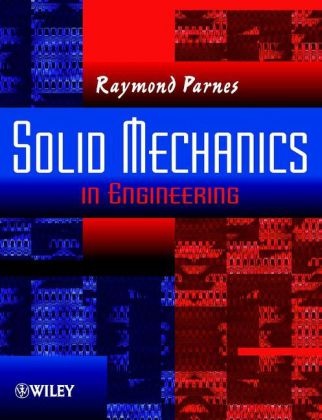Read more
Informationen zum Autor RAYMOND PARNES is a Professor in the Department of Solid Mechanics, Materials and Structures in Tel-Aviv University. A graduate of Columbia University, he has over 25 years experience of teaching the subject in the United States, Europe and Israel and has published extensively in a variety of subjects in Solid Mechanics. Klappentext This book provides a systematic, modern introduction to solid mechanics that is carefully motivated by realistic Engineering applications. Based on 25 years of teaching experience, Raymond Parnes uses a wealth of examples and a rich set of problems to build the reader's understanding of the scientific principles, without requiring ¿higher mathematics¿. Highlights of the book include * The use of modern SI units throughout * A thorough presentation of the subject stressing basic unifying concepts * Comprehensive coverage, including topics such as the behaviour of materials on a phenomenological level. * Over 600 problems, many of which are designed for solving with MATLAB, MAPLE or MATHEMATICA. Solid Mechanics in Engineering is designed for 2-semester courses in Solid Mechanics or Strength of Materials taken by students in Mechanical, Civil or Aeronautical Engineering and Materials Science and may also be used for a first-year graduate program. Zusammenfassung This book provides a systematic, modern introduction to solid mechanics that is carefully motivated by realistic Engineering applications. Inhaltsverzeichnis Preface. PART A: BASIC CONCEPTS. 1 Introductory Concepts of Solid Mechanics. 2 Internal Forces and Stress. 3 Deformation and Strain. 4 Behaviour of Materials: Constitutive Equations. 5 Summary of Basic Results and Further Idealisations: Solutions using the "Mechanics-of-Materials" Approach. PART B: APPLICATIONS TO SIMPLE ELEMENTS. 6 Axial Loadings. 7 Torsion of Circular Cylindrical Rods: Coulomb Torsion. 8 Symmetric Bending of Beams - Basic Relations and Stresses. 9 Symmetric Bending of Beams: Deflections, Fundamental Solutions and Superposition. 10 Thin-Wall Pressure Vessels: Thin Shells Under Pressure. 11 Stability and Instability of Rods under Axial Compression: Beam-Columns and Tie-Rods. 12 Torsion of Elastic Members of Arbitrary Cross-Section: de Saint Venant Torsion. 13 General Bending Theory of Beams. PART C: ENERGY METHODS AND VIRTUAL WORK. 14 Basic Energy Theorems, Principles of Virtual Work and their Application to Structural Mechanics. 15 Stability of Mechanical Systems by Energy Considerations: Approximate Methods. Appendix A: Properties of Areas. Appendix B: Some Mathematical Relations. Appendix C: The Membrane Equation. Appendix D: Material Properties. Appendix E: Table of Structural Properties. Appendix F: Reactions, Deflections and Slopes of Selected Beams. Answers to Selected Problems. Index....
List of contents
Preface.
PART A: BASIC CONCEPTS.
1 Introductory Concepts of Solid Mechanics.
2 Internal Forces and Stress.
3 Deformation and Strain.
4 Behaviour of Materials: Constitutive Equations.
5 Summary of Basic Results and Further Idealisations: Solutions using the "Mechanics-of-Materials" Approach.
PART B: APPLICATIONS TO SIMPLE ELEMENTS.
6 Axial Loadings.
7 Torsion of Circular Cylindrical Rods: Coulomb Torsion.
8 Symmetric Bending of Beams - Basic Relations and Stresses.
9 Symmetric Bending of Beams: Deflections, Fundamental Solutions and Superposition.
10 Thin-Wall Pressure Vessels: Thin Shells Under Pressure.
11 Stability and Instability of Rods under Axial Compression: Beam-Columns and Tie-Rods.
12 Torsion of Elastic Members of Arbitrary Cross-Section: de Saint Venant Torsion.
13 General Bending Theory of Beams.
PART C: ENERGY METHODS AND VIRTUAL WORK.
14 Basic Energy Theorems, Principles of Virtual Work and their Application to Structural Mechanics.
15 Stability of Mechanical Systems by Energy Considerations: Approximate Methods.
Appendix A: Properties of Areas.
Appendix B: Some Mathematical Relations.
Appendix C: The Membrane Equation.
Appendix D: Material Properties.
Appendix E: Table of Structural Properties.
Appendix F: Reactions, Deflections and Slopes of Selected Beams.
Answers to Selected Problems.
Index.
Report
"...The book is clearly laid out, well illustrated and the quality of reproduction is excellent...highly recommended.." ( Materials World , September 2002)

